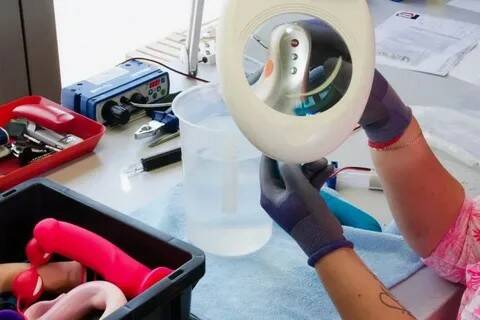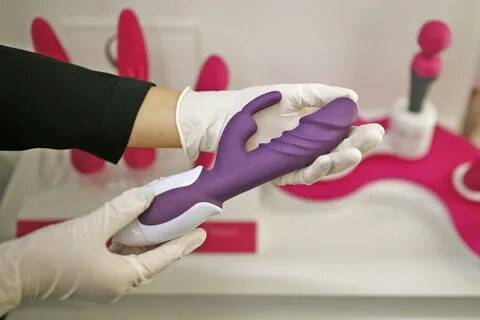
Safety testing for adult toys is an important aspect of ensuring consumer protection and well-being. Manufacturers and regulatory authorities may conduct various tests to evaluate the safety and quality of adult toys. Here are some common safety testing measures:
Contents
Material Safety:
Material safety is a critical aspect of adult toy safety testing. The materials used in adult toys should be non-toxic, body-safe, and free from harmful substances. Here are some important considerations regarding material safety in adult toy safety testing:
- Non-Toxic Materials: Adult toys should be made from materials that are non-toxic and safe for use on or in contact with the body. Commonly used materials include silicone, medical-grade silicone, ABS plastic, glass, stainless steel, and body-safe metals. These materials are chosen for their non-toxic properties and are less likely to cause adverse reactions.
- Phthalate-Free: Phthalates are chemicals that are sometimes used as plasticizers in certain materials. They have been linked to potential health risks, including hormonal disruptions. To ensure safety, many countries have regulations limiting or banning the use of phthalates in certain types of toys, including adult toys.
- Allergenicity and Sensitivity: Some individuals may have sensitivities or allergies to certain materials. Adult toys should undergo testing to assess the potential for skin irritations or allergic reactions. This may involve tests such as patch testing or evaluating the materials for known allergens.
- Chemical Testing: Adult toys may be subjected to chemical testing to identify the presence of harmful substances. This can include testing for heavy metals, such as lead or cadmium, as well as other potentially harmful chemicals. The purpose is to ensure that the materials used in the toys meet safety standards and do not pose risks to the user’s health.
- Material Durability: Material durability is an important consideration in adult toy safety. The materials should be able to withstand normal use without breaking, degrading, or causing harm. This can involve testing the strength, flexibility, and overall integrity of the materials used.
Mechanical and Electrical Safety:
Mechanical and electrical safety testing is an essential aspect of ensuring the safety and functionality of adult toys. Here are some key considerations regarding mechanical and electrical safety in adult toy safety testing:
- Electrical Safety: Adult toys https://incognito.black that are powered by electricity or batteries should undergo testing to ensure compliance with electrical safety standards. This includes evaluating the insulation of electrical components, such as wires and connectors, to prevent the risk of electric shock or short circuits. Manufacturers should adhere to relevant electrical safety regulations and standards specific to the target market.
- Battery Safety: If the adult toy uses batteries, safety testing may involve assessing the compatibility and stability of the battery compartment, ensuring proper insulation to prevent contact with electrical components, and verifying that the toy operates safely within the specified voltage range.
- Overheating Protection: Toys with heating elements or vibrating motors should be tested for overheating. This includes evaluating the temperature rise during operation to ensure it remains within safe limits. Adequate insulation and heat dissipation mechanisms should be in place to prevent burns or damage to the toy.
- Mechanical Strength: Adult toys should be tested for mechanical strength to ensure they can withstand normal use without breaking or causing harm. This includes assessing the strength and durability of materials, such as handles, controls, or structural components, to avoid potential hazards associated with breakage or detachment.
- Moving Parts Safety: Adult toys with moving parts, such as rotating or thrusting mechanisms, should undergo testing to ensure they operate smoothly and safely. This involves assessing the integrity of the mechanisms, the safety of moving parts, and the prevention of pinch points or entanglement hazards.

Durability and Structural Integrity:
Durability and structural integrity are important factors in adult toy safety testing. Ensuring that adult toys are durable and structurally sound is crucial for their safe and effective use. Here are some key considerations regarding durability and structural integrity in adult toy safety testing:
- Strength and Stability: Adult toys should be tested to ensure that they are structurally sound and can withstand normal use without breaking or causing harm. This includes evaluating the strength and stability of materials, such as handles, bases, or connectors, to prevent potential hazards associated with breakage or detachment.
- Stress Testing: Manufacturers may subject adult toys to stress testing to assess their ability to withstand repeated use or pressure. This involves applying forces or movements to the toy beyond normal usage to simulate rigorous conditions and ensure it can handle the intended purpose without failure.
- Impact Resistance: Adult toys may undergo impact resistance testing to evaluate their ability to withstand accidental drops or impacts without damage or structural compromise. This helps ensure that the toy remains safe and functional even in the event of accidental mishandling.
- Wear and Tear: Durability testing may involve simulating normal wear and tear conditions to assess the toy’s performance over time. This can include repeated cycles of movement, friction, or exposure to different environmental conditions to evaluate the toy’s longevity and durability.
- Material Quality: Adult toy manufacturers should use high-quality materials that are specifically chosen for their durability. This may include materials such as strong plastics, silicone, or metal alloys known for their durability and resistance to wear and tear.
Waterproof or Water Resistance Testing:
Waterproof or water resistance testing is an important aspect of adult toy safety testing, particularly for toys designed for use in wet or aquatic environments. Ensuring that adult toys are properly sealed and protected from water penetration is crucial for both user safety and the longevity of the product. Here are some key considerations regarding waterproof or water resistance testing in adult toy safety testing:
- Water Ingress Prevention: Adult toys marketed as waterproof or water-resistant should undergo testing to verify their ability to prevent water from entering sensitive components, such as motors, batteries, or electronic circuits. This testing ensures that the toy can be safely used in water without the risk of electrical malfunctions or damage.
- Submersion Testing: Adult toys are often subjected to submersion testing to evaluate their performance in water. This involves immersing the toy in water for a specified period at specified depths to assess its ability to withstand water pressure without compromising its structural integrity or allowing water ingress.
- Seal and Gasket Integrity: Waterproof or water-resistant adult toys should have effective seals or gaskets at key entry points, such as battery compartments or charging ports. Testing is conducted to ensure that these seals are properly designed and function as intended, preventing water from entering the internal components.
- Pressure Testing: Some adult toys undergo pressure testing to evaluate their ability to withstand water pressure at different depths. This helps determine if the toy can maintain its waterproof or water-resistant properties under varying water pressures, such as in a bathtub, pool, or shower.
- Functionality in Water: Waterproof adult toys may also undergo testing to assess their functionality and performance while submerged or in contact with water. This includes evaluating the operation of vibrating or motorized components, controls, and other features to ensure they work effectively in wet conditions.
Sensitivity and Allergenicity:
Sensitivity and allergenicity testing is an important aspect of adult toy safety testing to assess the potential for skin irritations or allergic reactions caused by the materials used in the toys. Here are some key considerations regarding sensitivity and allergenicity testing in adult toy safety:
- Skin Irritation Testing: Adult toys may undergo skin irritation testing to evaluate their potential to cause irritation or adverse reactions on the skin. This can involve conducting patch tests on human volunteers, where a small portion of the toy or its materials is applied to the skin under controlled conditions to observe any adverse reactions.
- Allergen Testing: Adult toy manufacturers may conduct allergen testing to identify the presence of known allergenic substances in the materials used. This includes testing for common allergens such as latex, certain dyes, fragrances, or other components that could trigger allergic reactions in sensitive individuals.
- Sensitivity Assessment: Sensitivity testing involves evaluating the potential of adult toys to cause sensitivity reactions, which are milder than full-blown allergies but can still result in discomfort or irritation. This testing can help identify potential issues that may affect a broader range of users, including those with heightened sensitivity.
- Material Selection: Manufacturers often choose materials known for their hypoallergenic properties, such as medical-grade silicone or body-safe metals, to minimize the risk of sensitivities or allergic reactions. These materials are less likely to cause adverse skin reactions and are more suitable for individuals with sensitivities or allergies.
- Quality Control: Robust quality control measures should be implemented throughout the manufacturing process to ensure consistency in the materials used and to minimize the risk of contamination or the introduction of allergens during production.
Ergonomics and Functionality:
Ergonomics and functionality are important considerations in adult toy safety testing. Ensuring that adult toys are designed with user comfort, ease of use, and optimal functionality in mind is crucial for a positive and safe experience. Here are some key aspects of ergonomics and functionality in adult toy safety testing:
- User Comfort: Adult toys should be designed with ergonomic considerations to ensure they are comfortable to hold, maneuver, and use. Testing may involve evaluating the shape, size, and texture of the toy to ensure it fits well in the user’s hand and is comfortable during prolonged use.
- User-Friendly Controls: Adult toys should have intuitive and user-friendly controls, buttons, or switches that are easy to locate, understand, and operate. Testing may involve assessing the functionality and accessibility of controls to ensure they are responsive and easy to use without confusion or accidental activation.
- Safety Features: Adult toys may incorporate safety features to prevent accidental activation or injury. For example, some toys may have a locking mechanism or require specific steps to power on/off or change settings. Testing may involve evaluating the effectiveness and reliability of these safety features.
- Functionality Testing: Adult toys should undergo testing to assess their functionality and performance according to their intended purpose. This includes evaluating the effectiveness of vibration patterns, rotation speeds, or other features to ensure they operate as intended without any malfunctions or unexpected behaviors.
- Noise Levels: Some adult toys produce noise during operation. Testing may involve evaluating the noise levels generated by the toy to ensure they are within acceptable limits, providing a discreet and comfortable experience for the user.